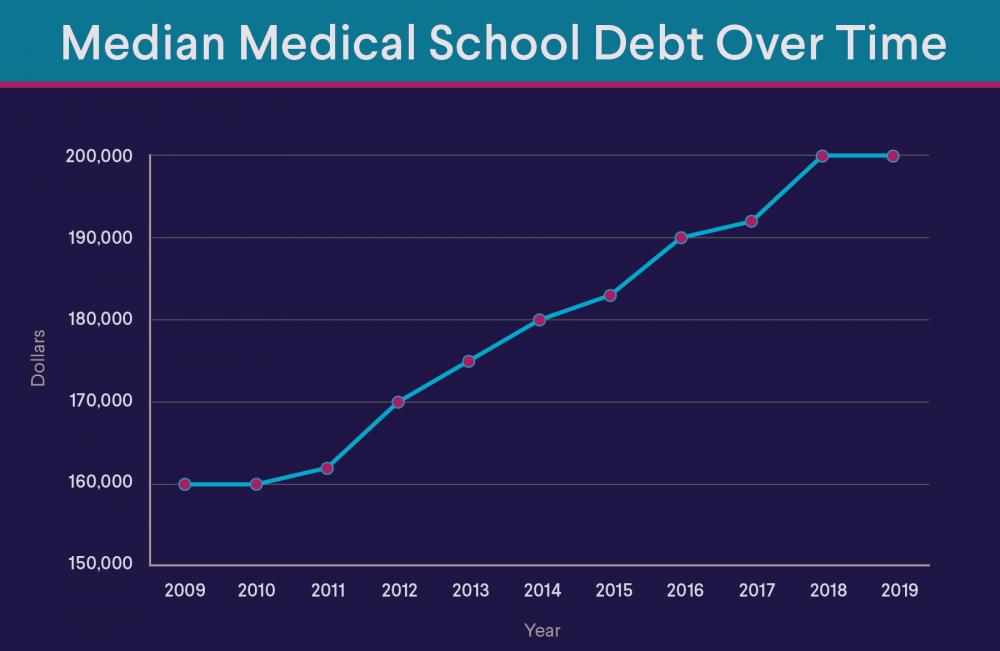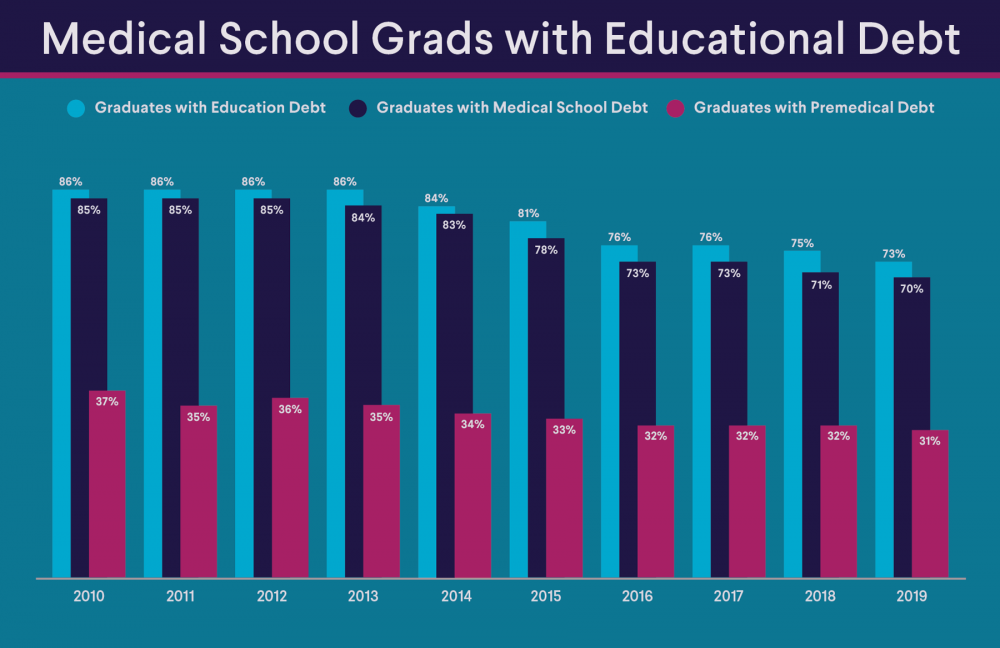Using In-School Deferment as a Student
Undergraduate and graduate students in school at least half-time can put off making federal student loan payments, and possibly private student loan payments, with in-school deferment. The catch? Interest usually accrues.
Loans are a fact of life for many students. In fact, a majority of them graduate with student loan debt.
While some students choose to start paying off their loans while they’re still in college, many take advantage of in-school deferment.
Key Points
• In-school deferment allows students to postpone federal and some private student loan payments while enrolled at least half-time, although interest typically accrues during this period.
• Federal student loans automatically enter in-school deferment, while students must initiate deferment requests for private loans through their loan servicer.
• Accrued interest on federal Direct Unsubsidized Loans during deferment will be capitalized, increasing the principal balance and future monthly payments.
• Alternatives to in-school deferment include economic hardship, graduate fellowship, military service, and unemployment deferments, each with specific eligibility criteria.
• Exploring options like income-based repayment or refinancing can help manage student debt, but refinancing federal loans eliminates access to federal benefits like deferment and forgiveness.
What Is In-School Deferment?
In-school deferment allows an undergraduate or graduate student, or parent borrower, to postpone making payments on:
• Direct Loans, which include PLUS loans for graduate and professional students, or parents of dependent undergrads; subsidized and unsubsidized loans; and consolidation loans
• Federal Family Education Loan (FFEL) Program loans
Parents with PLUS loans may qualify for deferment if their student is enrolled at least half-time at an eligible college or career school.
What about private student loans? Many lenders allow students to defer payments while they’re in school and for six months after graduation. Sallie Mae lets you defer payments for up to 48 months as long as you are enrolled at least half-time.
But each private lender has its own rules.
Recommended: How Does Student Loan Deferment in Grad School Work?
How In-School Deferment Works
Federal student loan borrowers in school at least half-time are to be automatically placed into in-school deferment. You should receive a notice from your loan servicer.
If your loans don’t go into automatic in-school deferment or you don’t receive a notice, get in touch with the financial aid office at your school. You may need to fill out an In-School Deferment Request, which is available at studentaid.gov.
If you have private student loans, it’s a good idea to reach out to your loan servicer to request in-school deferment. If you’re seeking a new private student loan, you can review the lender’s school deferment rules.
Most federal student loans also have a six-month grace period after a student graduates, drops below half-time enrollment, or leaves school before payments must begin. This applies to graduate students with PLUS loans as well.
Parent borrowers who took out a PLUS loan can request a six-month deferment after their student graduates, leaves school, or drops below half-time enrollment.
Requirements for In-School Deferment
Students with federal student loans must be enrolled at least half-time in an eligible school, defined by the Federal Student Aid office as one that has been approved by the Department of Education to participate in federal student aid programs, even if the school does not participate in those programs.
That includes most accredited American colleges and universities and some institutions outside the United States.
In-school deferment is primarily for students with existing loans or those who are returning to school after time away.
The definition of “half-time” can be tricky. Make sure you understand the definition your school uses for school deferment, as not all schools define half-time status the same way. It’s usually based on a certain number of hours and/or credits.
Do I Need to Pay Interest During In-School Deferment?
For most federal student loans and many private student loans, no.
However, if you have a federal Direct Unsubsidized Loan, interest will accrue during the deferment and be added to the principal loan balance.
If you have a Direct Subsidized Loan or a Perkins Loan, the government pays the interest while you’re in school and during grace periods. That’s also true of the subsidized portion of a Direct Consolidation Loan.
Interest will almost always accrue on deferred private student loans.
Although postponement of payments takes the pressure off, the interest that you’re responsible for that accrues on any loan is currently capitalized, or added to your balance, after deferments and grace periods. (This capitalization will no longer occur in certain situations as of July 2023, thanks to new regulations from the Department of Education that are set to take effect.) You’ll then be charged interest on the increased principal balance. Capitalization of the unpaid interest may also increase your monthly payment, depending on your repayment plan.
If you’re able to pay the interest before it capitalizes, that can help keep your total loan cost down.
Alternatives to In-School Deferment
There are different types of deferment aside from in-school deferment.
• Economic Hardship Deferment. You may receive an economic hardship deferment for up to three years if you receive a means-tested benefit, such as welfare, you are serving in the Peace Corps, or you work full time but your earnings are below 150% of the poverty guideline for your state and family size.
• Graduate Fellowship Deferment. If you are in an approved graduate fellowship program, you could be eligible for this deferment.
• Military Service and Post-Active Duty Student Deferment. You could qualify for this deferment if you are on active duty military service in connection with a military operation, war, or a national emergency, or you have completed active duty service and any applicable grace period. The deferment will end once you are enrolled in school at least half-time, or 13 months after completion of active duty service and any grace period, whichever comes first.
• Rehabilitation Training Deferment. This deferment is for students who are in an approved program that offers drug or alcohol, vocational, or mental health rehabilitation.
• Unemployment Deferment. You can receive this deferment for up to three years if you receive unemployment benefits or you’re unable to find full-time employment.
For most deferments, you’ll need to provide your student loan servicer with documentation to show that you’re eligible.
Then there’s federal student loan forbearance, which temporarily suspends or reduces your principal monthly payments, but interest always continues to accrue.
Some private student loan lenders offer forbearance as well.
If your federal student loan type does not charge interest during deferment, that’s probably the way to go. If you’ve reached the maximum time for a deferment or your situation doesn’t fit the eligibility criteria, applying for forbearance is an option.
If your ability to afford your federal student loan payments is unlikely to change any time soon, you may want to consider an income-based repayment plan.
Another option to explore is student loan refinancing. The goal of refinancing with a private lender is to change your rate or term. If you qualify, all loans can be refinanced into one new private loan.
Playing with the numbers can be helpful when you’re considering refinancing. Using a student loan refinance calculator can help you figure out how much you might save.
Should you refinance your student loans? If it could save you money, refinancing may be worth it for you. Just know that if you refinance federal student loans, they will no longer be eligible for federal deferment or forbearance, loan forgiveness programs, or income-driven repayment. Make sure you won’t need access to these programs.
As you’re weighing the pros and cons, this student loan refinancing guide can be a valuable resource to help you decide if refinancing makes sense for you.
The Takeaway
What is in-school deferment? It allows undergraduates and graduate students to buy time before student loan payments begin, but interest usually accrues and is added to the balance.
If you’d like to lower your student loan rates, look into refinancing with SoFi. Students are eligible to refinance a parent’s PLUS loan along with their own student loans. And there are no fees.
Third-Party Brand Mentions: No brands, products, or companies mentioned are affiliated with SoFi, nor do they endorse or sponsor this article. Third-party trademarks referenced herein are property of their respective owners.
Financial Tips & Strategies: The tips provided on this website are of a general nature and do not take into account your specific objectives, financial situation, and needs. You should always consider their appropriateness given your own circumstances.
External Websites: The information and analysis provided through hyperlinks to third-party websites, while believed to be accurate, cannot be guaranteed by SoFi. Links are provided for informational purposes and should not be viewed as an endorsement.
SoFi Student Loan Refinance
SoFi Student Loans are originated by SoFi Bank, N.A. Member FDIC. NMLS #696891. (www.nmlsconsumeraccess.org). SoFi Student Loan Refinance Loans are private loans and do not have the same repayment options that the federal loan program offers, or may become available, such as Public Service Loan Forgiveness, Income-Based Repayment, Income-Contingent Repayment, PAYE or SAVE. Additional terms and conditions apply. Lowest rates reserved for the most creditworthy borrowers. For additional product-specific legal and licensing information, see SoFi.com/legal.
SoFi Loan Products
SoFi loans are originated by SoFi Bank, N.A., NMLS #696891 (Member FDIC). For additional product-specific legal and licensing information, see SoFi.com/legal. Equal Housing Lender.
SOSL0423016 Read more






